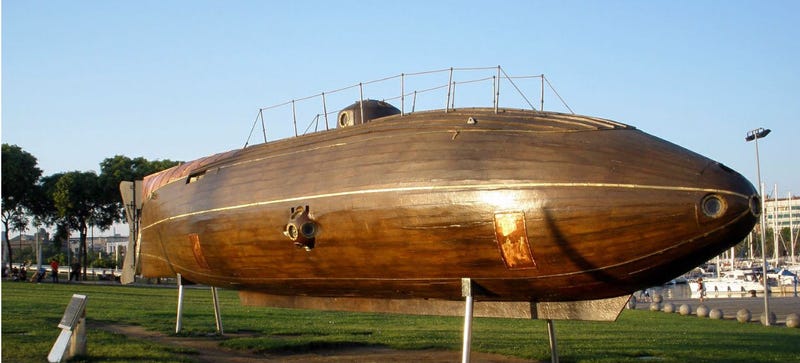https://gizmodo.com/the-worlds-first-powered-submarine-arrived-60-years-bef-1633984685
For years I was taught as a kid that Spaniards had invented both the submarine and the helicopter. I just dismissed this as bending the truth, but I recently stumbled across this:

The Ictineo II was constructed of olive wood, measured 46 feet long, more than 6 feet wide, and stood nearly 10 feet tall when out of the water. In the water, she displaced 46 metric tons while providing 1,000 cubic feet of interior room. Compared to the Hunley, which was 4 feet tall at its highest interior point, this thing was downright roomy.
Its propulsion system was a work of genius. In a closed system like that of a submerged vessel, a traditional combustion engine will quickly use up all of the available supply of atmospheric oxygen. So instead, Monturiol devised a solution that mixed zinc, manganese dioxide, and potassium chlorate to create a chemical heat source hot enough to boil the water of an attached a steam furnace and generate power for propulsion. The reaction also generated enough oxygen to support a two-man crew (the rest of that “roomy” interior was actually filled up with equipment).
During the Ictineo II’s maiden dive in May of 1865, she made it down to a depth of 98 feet—the perfect level for her intended use: ferrying local coral divers down to their harvests. She would make 20 more successful dives over her three year demonstration career until 1867.
The “helicopter” turned out to be the autogyro , a VSTOL flying machine using an unpowered rotary wing which was quite popular in the pioneer days of aviation, but is practically forgotten today.
